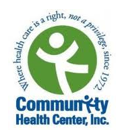University of Bridgeport expands integrative pain program in community health centers
 by John Weeks, Publisher/Editor of The Integrator Blog News and Reports
by John Weeks, Publisher/Editor of The Integrator Blog News and Reports
After introducing chiropractic and acupuncture services to pain treatment in a Connecticut-based Federally Qualified Health Center (FQHC), 98 percent of patients reported satisfaction and 90 percent said their conditions improved.
Now, the novel program developed as a chiropractic residency through the University of Bridgeport (UB) has expanded to seven residencies in 15 sites, and it is linked to a national chronic pain program that could kick-start widespread use of these integrative best practices.
 The UB program is enthusiastically directed by James Lehman, DC, MBA, an Associate Professor of Clinical Sciences and Director of Community Health Clinical Education. Lehman is confident that results from a more thorough study under development will continue to foster more uptake. He’d like to see the integrative team expand to include naturopathic doctors and licensed acupuncturists. He projects that, prior to his retirement, the network of chiropractic residents that started four years ago with just one at a local community health center will have spread to 100 in multiple primary care sites.
The UB program is enthusiastically directed by James Lehman, DC, MBA, an Associate Professor of Clinical Sciences and Director of Community Health Clinical Education. Lehman is confident that results from a more thorough study under development will continue to foster more uptake. He’d like to see the integrative team expand to include naturopathic doctors and licensed acupuncturists. He projects that, prior to his retirement, the network of chiropractic residents that started four years ago with just one at a local community health center will have spread to 100 in multiple primary care sites.
A part of Lehman’s optimism stems from a recent connection of his program with the nationally-heralded best practices initiative Project ECHO, based in the medical school at Lehman’s alma mater, University of New Mexico. ECHO is an acronym for “Extension for Community Healthcare Outcomes,” a now international program that began caring for hepatitis C patients, and has since expanded to scores of conditions in multiple locations.
In an interview for this article, Lehman shared that he and his team are now “part of the ECHO program for chronic pain.” As such, the UB program has an inside track in an organization that has as its mission to “dramatically increase access to specialty treatment” in multiple conditions, including that for which his program has shown such valuable outcomes. Uptake of the ECHO chronic pain model as demonstrated through UB could launch the chiropractic strategy nationally.
 The integrative pain program began with a six-month pilot project at one of the FQHC locations of Connecticut’s Community Health Center, Inc (CHCI) in Middletown, CT. A detailed analysis of patient data in 2012 prior to the pilot found 12,000 patients cared for at CHCI had a chronic pain-related condition. None were known to be treated by chiropractors. These patients accounted for nearly 40 percent of all adult patient visits during that year. Opioids were commonly used to treat chronic pain, with more than 1,200 patients managed with opioids for use of more than 90 days.
The integrative pain program began with a six-month pilot project at one of the FQHC locations of Connecticut’s Community Health Center, Inc (CHCI) in Middletown, CT. A detailed analysis of patient data in 2012 prior to the pilot found 12,000 patients cared for at CHCI had a chronic pain-related condition. None were known to be treated by chiropractors. These patients accounted for nearly 40 percent of all adult patient visits during that year. Opioids were commonly used to treat chronic pain, with more than 1,200 patients managed with opioids for use of more than 90 days.
The outcomes noted above, and the experience of care in the pilot, led to inclusion of chiropractors as full members of CHCI’s medical staff. They not only provide manual medicine services, but have evaluation and management responsibilities. CHC’s senior vice president and clinical director, Margaret Flinter, PhD , captured the early experience.
 “We have found that the integration of chiropractic services enabled our patients to experience less pain and promoted healthy living,” she said. “Hopefully, other community health centers in Connecticut and across the country will use our model to reduce chronic pain and improve quality of life.”
“We have found that the integration of chiropractic services enabled our patients to experience less pain and promoted healthy living,” she said. “Hopefully, other community health centers in Connecticut and across the country will use our model to reduce chronic pain and improve quality of life.”
Lehman suggests that the outcomes of perhaps the greatest significance are the experiences of the conventional practitioners. “The PCPs [primary care providers] like to refer to the chiropractors as it takes a load off their schedules.”
The success shows up in the scheduling, he says. “There is usually a fairly long wait for chiropractic services at most of the facilities. There is a lot of demand.”
Chiropractors for UB work at CHCI in a system that is based in an electronic medical record at the core of the heavily regulated, team-based environment of a Joint Commission accredited, Level 3 Patient Centered Medical Home. The typical team members with whom the chiropractors work are primary care practitioners who can be medical doctors, osteopaths or advance practice nurses. Closely connected on the team are behavioral health practitioners, typically psychologists or, again, advanced practice nurses. The University of Bridgeport clinical team typically includes a lead clinician who is a University of Bridgeport College of Chiropractic (UBCC) faculty member board certified in a chiropractic specialty, most often non-surgical, chiropractic orthopedics one or more neuromusculoskeletal medicine residents, and one or more fourth year chiropractic students.
The UB services in pain treatment have two notable extensions to the way chiropractic care is integrated. One is that the chiropractors’ potential is not managed into a limited box of only treating back pain. They are also used for smoking cessation, nutrition and hydration, specific exercise programs, and posture. The medical treatment “is not just spine issues,” said Lehman.
Instead, the CHC chiropractors are dealing with “nerve compression issues and a lot of neuromusculoskeletal conditions.” One common symptom is myofascial pain, which Lehman says is “frequently misdiagnosed as fibromyalgia.” The top three diagnoses in the pilot were:
- G89.11 Acute pain post trauma
- G89.21 Chronic pain post trauma
- G89.4 Chronic pain.
The second unusual clinical service characteristic is that, in Connecticut, chiropractors are licensed to provide acupuncture via add-on training that is similar in length to the 200-300 hour Helms Medical Institute and other short-programs through which medical doctors typically learn to practice acupuncture.
Chiropractors with this dual training work in a subset of the clinics where they provide both usual chiropractic treatments together with needling. “It is only provided on certain sites,” said Lehman, adding that where it is that it is “common” for the primary care provider to refer for acupuncture. The method for patient access to acupuncture is via referral for chiropractic “with request to consider acupuncture.”
“It seems the PCPs are very happy to access acupuncture as a different modality," Lehman said.
I asked Lehman why licensed acupuncturists are not utilized to provide acupuncture, especially since the University of Bridgeport also boasts a program in acupuncture and Oriental medicine. “They’re not part of the payment model, for Medicaid or Medicare,” Lehman explains. He urges the acupuncture profession to engage the “huge process” of gaining such standing, noting that doors will stay closed to them, and to naturopathic physicians, unless they do so.
“Here’s the reality," he said. "Unless the professions get credentialed through the government they will not be included.”
Lehman traces the expanded Medicaid coverage of chiropractic in Connecticut to the passage of Section 2706, No-Discrimination in Health Care in the Affordable Care Act. He adds that the coverage is limited, however, to Federally Qualified Health Centers, which are usually community health centers.
The UB integrative pain program is presently in two separate partnerships in Connecticut and is “starting in New Jersey via a grant to use ECHO, including the chronic pain initiative,” said Lehman.
 When asked if the expanding program had not yet produced any additional data that might be useful for the kind of expansion he foresees, Lehman shared that a proposal is presently going through Institutional Review Board (IRB) approval to examine care of chiropractors as “gatekeepers for spinal pain” with one potential partner being Wesleyan University. One outcome to be measured is the expensive use of emergency room visits pre-use and post-use of the chiropractic program.
When asked if the expanding program had not yet produced any additional data that might be useful for the kind of expansion he foresees, Lehman shared that a proposal is presently going through Institutional Review Board (IRB) approval to examine care of chiropractors as “gatekeepers for spinal pain” with one potential partner being Wesleyan University. One outcome to be measured is the expensive use of emergency room visits pre-use and post-use of the chiropractic program.
Lehman says that while there is presently no other hard data.
“I can tell you I get feedback from patient encounters—they always say the same things, he said. "First, the patient says the chiropractor tells them what’s wrong with them and they like that. Then the patients get relief in their pain. Finally, while most have been on a vicious cycle in how to get relief—they are pleasantly surprised and find that they are not interested in taking as many medications any longer.”
Lehman is secure that the expansion of integrated chiropractic services is well on its way with this “transformation of the role and position of chiropractic care in the health care system from being alternative and separate to alternative and mainstream.”
Comment: Internationally-renown futurist Clem Bezold, PhD, the chair of the Institute for Alternative Futures re-examined chiropractic in the 2013 publication Chiropractic 2025: Divergent Futures, during the early implementation of the Affordable Healthcare Act. He found that the “preferred scenario” for the chiropractic profession was one in which they were widely integrated in PCMHs nationwide. The model that Lehman and the University of Bridgeport is developing with their partners – especially with the potential of the ECHO program—is among the best sets of cobblestones yet laid that might walk the field successfully in this direction. Here’s hoping Lehman, UB, and their partners can begin generating more thorough outcomes data sooner rather than later.
Editor's Note: A follow-up article will examine structure of payment for services and the nature of the three-year residency, to which a two-year fellowship is an option.




















SHARE